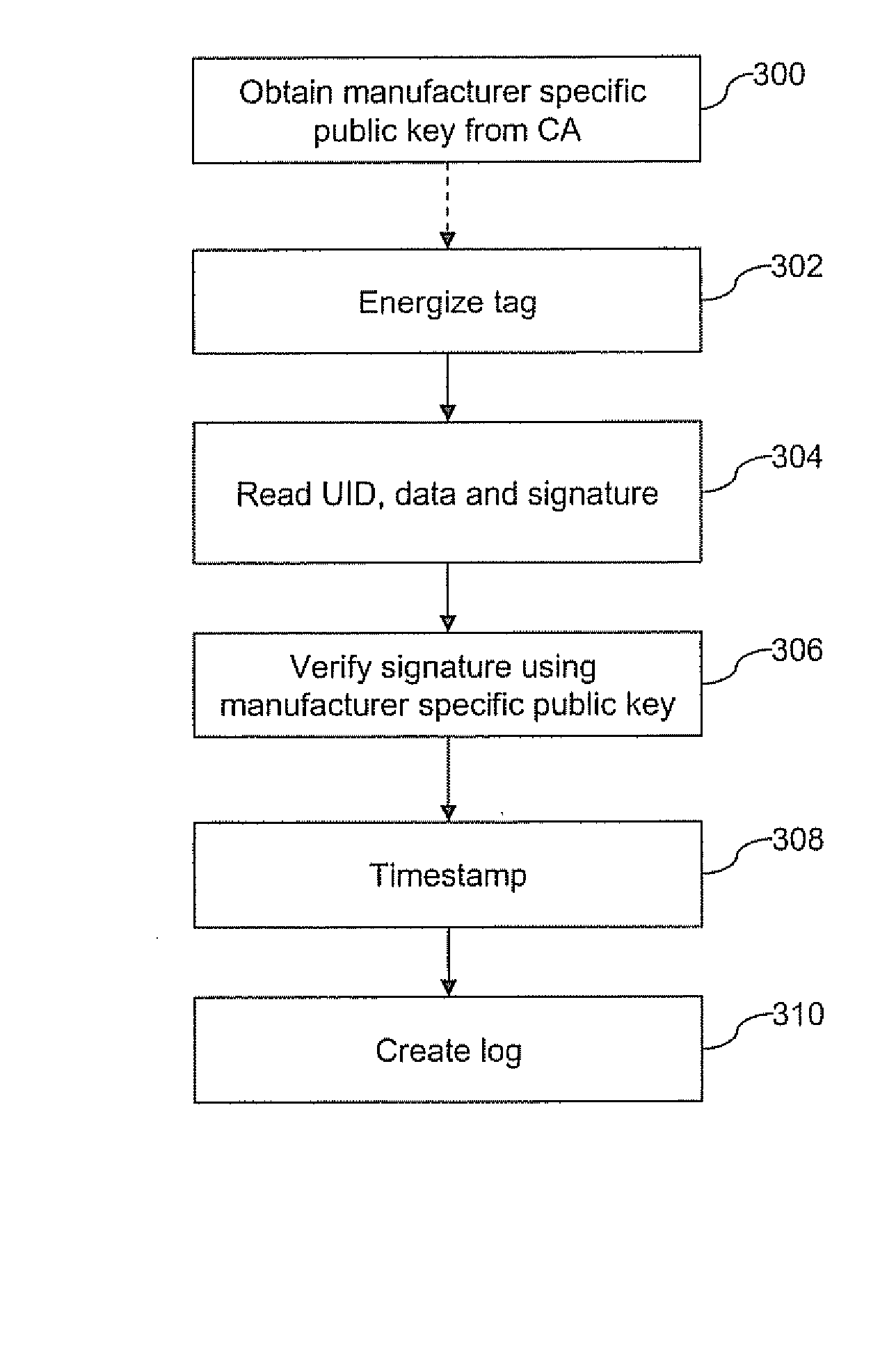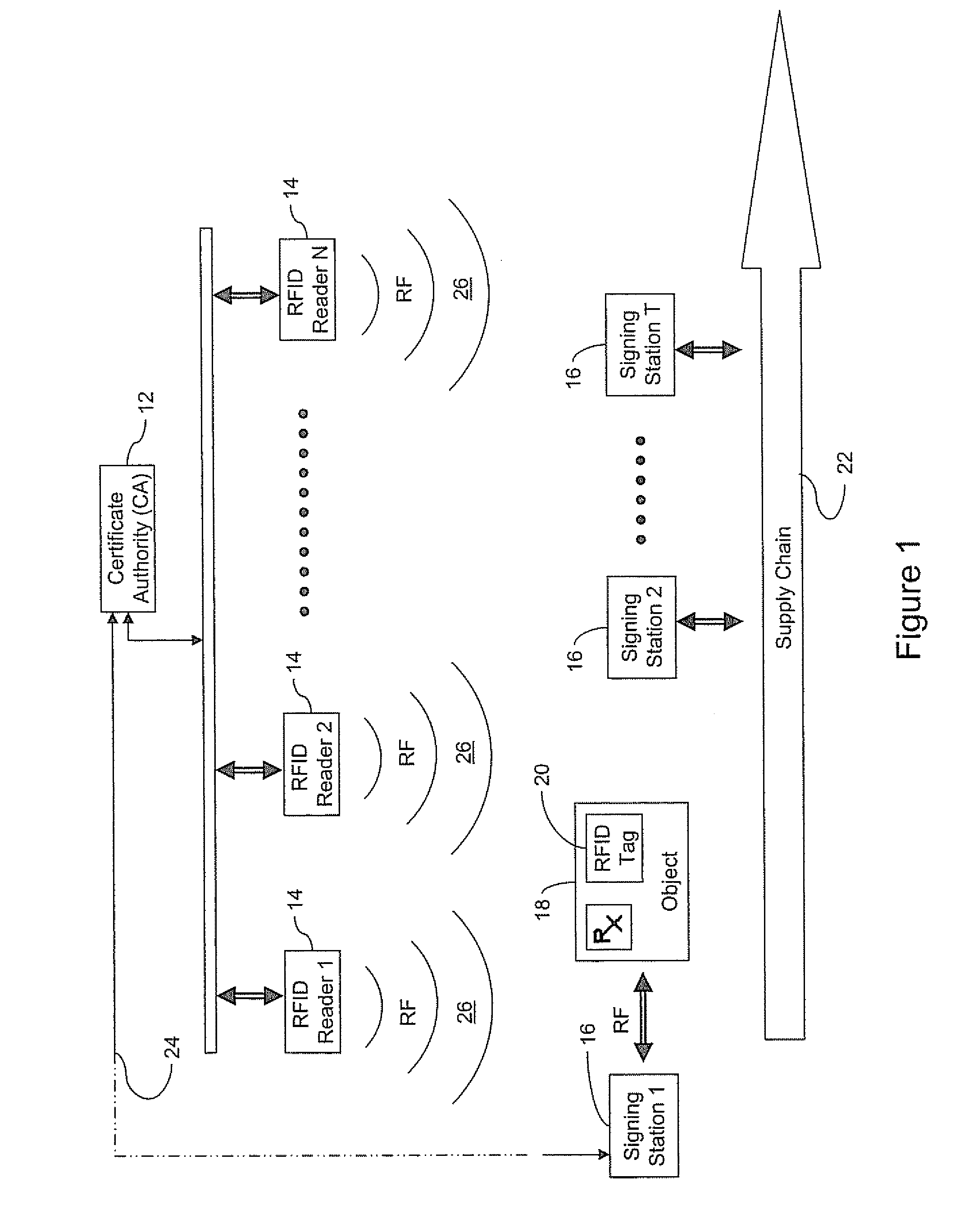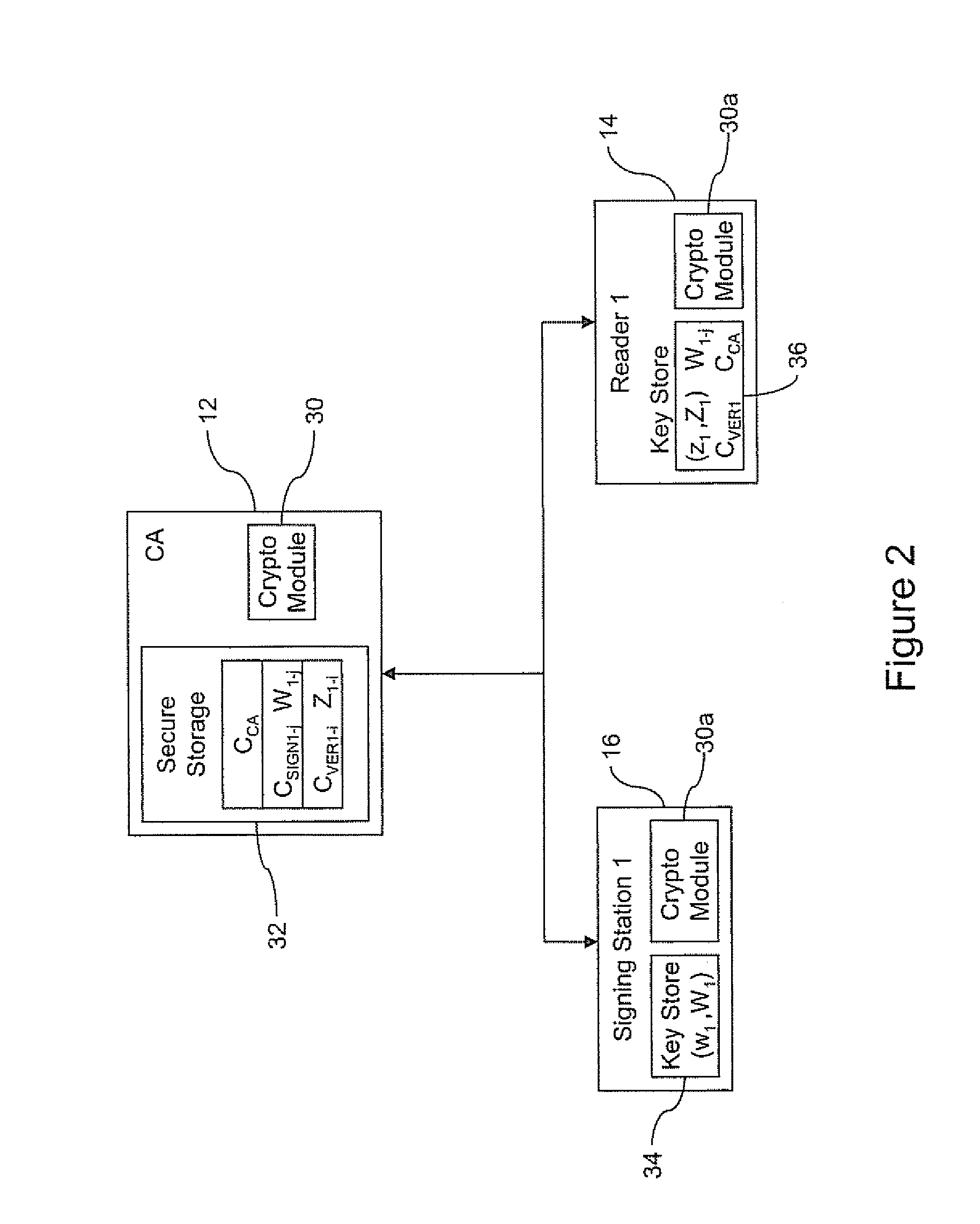Aggregate signature schemes
a technology of aggregation and signature schemes, applied in the direction of ignition automatic control, instruments, electric controllers, etc., can solve the problems of prohibitively expensive, large active rfid tags, and large number of active rfid tags
- Summary
- Abstract
- Description
- Claims
- Application Information
AI Technical Summary
Benefits of technology
Problems solved by technology
Method used
Image
Examples
Embodiment Construction
Authenticated RFID System and Example Supply Chain
[0046] Referring to FIG. 1, an authenticated RFID system 10 is shown. The system 10 shown comprises a certificate authority (CA) 12 for issuing certificates to control the distribution of public keys in one embodiment, an arbitrary N number of RFID readers 14 distributed along a supply chain 22 for reading an RFID tag 20 affixed to an object 18 (e.g. a pharmaceutical product, consumer product, piece of luggage, mobile communication device, etc.), and an arbitrary T number of signing stations 16 for writing signatures to the RFID tags 20 in establishing an electronic pedigree for the tag 20. Each reader 14 produces a radio frequency (RF) field 26 which energizes the tags 20, which in this example are preferably passive. It will be appreciated that the tags 20 may also be active if the cost can be justified for the particular application.
[0047] The CA 12 preferably communicates with the readers 14 and the signing stations 16 over a ...
PUM
 Login to View More
Login to View More Abstract
Description
Claims
Application Information
 Login to View More
Login to View More - R&D
- Intellectual Property
- Life Sciences
- Materials
- Tech Scout
- Unparalleled Data Quality
- Higher Quality Content
- 60% Fewer Hallucinations
Browse by: Latest US Patents, China's latest patents, Technical Efficacy Thesaurus, Application Domain, Technology Topic, Popular Technical Reports.
© 2025 PatSnap. All rights reserved.Legal|Privacy policy|Modern Slavery Act Transparency Statement|Sitemap|About US| Contact US: help@patsnap.com



